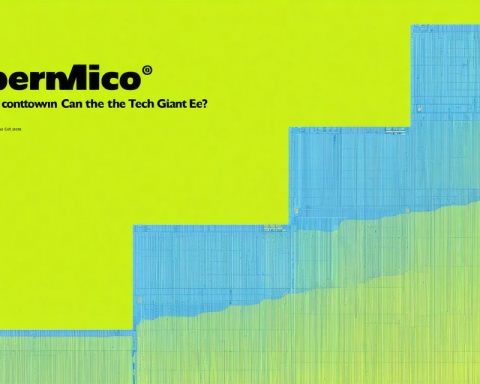- AI’s rapid evolution has transformed industries and elevated global technological ambitions.
- Concerns about an “AI bubble” arise from patterns of excessive investment and overvaluation.
- Major tech firms frequently announce AI projects, but commercialization and full integration often lag, leading to skepticism.
- An investment frenzy has startups branding products as “AI-enhanced,” drawing substantial investment despite uncertain long-term viability.
- Ethical and regulatory challenges, such as data privacy and job displacement, add complexity to AI’s deployment and growth.
- The future of AI depends on industry leaders’ ability to balance enthusiasm with responsible development and realistic expectations.
The rapid evolution of artificial intelligence (AI) has undeniably transformed industries and magnified technological ambitions worldwide. However, as with all surges in technological advancement, there’s growing concern about the sustainability of the current AI hype—and whether it may soon burst like a bubble.
The idea of an “AI bubble” arises from the pattern of excessive investment and overvaluation, reminiscent of past tech bubbles. Major tech companies consistently announce new AI-driven projects and tools, raising expectations sky-high. Yet, the commercialization and full integration of these innovations sometimes lag behind, sowing seeds of skepticism.
One factor fueling the bubble accusation is the current investment frenzy. Startups label almost anything as “AI-enhanced,” attracting vast sums from enthusiastic investors, eager not to miss out. However, these investments often gamble on features that could take years to mature or might not get realized to their full potential, underscoring a disconnect between market valuation and real-world capability.
Moreover, the ethical and regulatory challenges shadowing AI’s deployment add layers of uncertainty to its exploitation and scalability. With concerns about data privacy, biased algorithms, and job displacement, the enthusiasm must be balanced with responsible development.
In conclusion, while AI’s transformative potential is indisputable, lessons from past tech bubbles teach us to exercise caution. Whether the AI boom stabilizes or deflates, depends on how effectively industry leaders can navigate the challenges and temper expectations with reality.
The AI Hype: Is It a Revolutionary Leap or Just Another Bubble?
How Sustainable is the Current AI Boom?
1. What factors contribute to the perception of an AI bubble, and how sustainable is it?
The perception of an AI bubble arises primarily from the investment frenzy within the tech industry and the tendency for startups to label their products as “AI-enhanced.” This results in overvaluation, akin to past tech bubbles. While these investments spur innovation, they often lead to projects that either take years to mature or do not meet expected capabilities. Consequently, the market risks a disconnection between valuation and practical application. The sustainability of the AI boom hinges on whether companies can effectively address these expectations with tangible outcomes over time.
2. What are the main ethical and regulatory challenges confronting AI’s deployment?
The deployment of AI encompasses several ethical and regulatory challenges, including data privacy concerns, biased algorithms, and potential job displacement. These factors accumulate to add uncertainty to AI’s scalability and widespread adoption. Organizations and governments must balance the fervor surrounding AI advancements with responsible development frameworks. Emphasizing transparency and accountability in algorithmic decision-making can help mitigate risks and foster public trust in AI technologies.
3. How could past tech bubbles inform future AI development?
Previous tech bubbles remind us of the dangers of unrestrained hype and speculation without a realistic assessment of a technology’s potential. Lessons learned emphasize the importance of aligning market expectations with actual technological capabilities and profitability. AI industry leaders who focus on incremental, ethical advancements and sustainable investment strategies are more likely to maintain stability in the sector, potentially averting a bubble collapse.
Relevant Resources for Further Reading
– For a comprehensive analysis of tech investments, check out Bloomberg.
– Explore insights into AI ethics and legislation at Wired.
– For innovative trends in AI development, visit MIT Technology Review.
Stay informed on AI’s transformative journey and navigate the fine line between enthusiasm and caution as technological ambitions soar.









